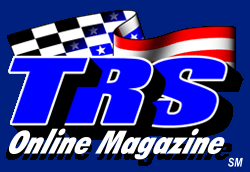|
By Will
Wills
People
have been building boats about a million years longer than they have
been building trucks so there is no reason why we can’t learn
something useful from the boat builders.
A very useful thing we can learn is an easy method for making
parts fit unusual shapes. The method I want to show you is called fitting
by back-measuring and by using your head you can apply this method
to almost any shape. It
would be useful for building sub boxes, building hood scoops, shaping a
bumper to the contours of the fenders—anything.
The
first step is to get a board to use as a pattern, 1/4” plywood works
well, and roughly shape it to within an inch around the inside or
outside of the area where you need to fit a part. Here I am doing an
inside fitting. An outside fitting is no different except the pattern
might be U shaped to loosely fit over a transmission hump for a console
or around a window pillar to make a gauge pod—for example, or L-shaped
if you were going to pick up the contours of a fender to make a bumper
look like it belongs on your truck.
Level
the pattern on the exact plane that the part will fit. It doesn’t have
to be level with Mother Earth, unless that’s what you need. For
instance, a console over a transmission hump could be angled away at
45-degrees so you could see the gauges.
What I am doing here is forming a seat to go into the bow of a
small boat.

Next you need a sharp stick of maybe 4-6” length—you’ve been
playing with sharp sticks since you were so high so this should be easy.
The stick should be more or less straight along one side and it
needs a notch cut into it, as mine has.
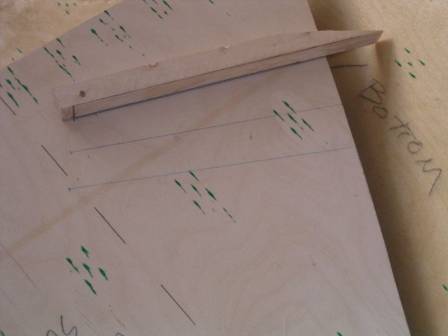
What you are going to do with your sharp stick is very simple. Place it
flat on the pattern, touch it to truck, boat, whatever, and draw along
the stick carefully until the notch stops your pencil or sharpie. Make a
thicker mark in the notch. Keep
doing this all over the place. In straighter place you don’t need very
many lines and marks. In places where the shape is rapidly changing,
make lots of lines and marks.
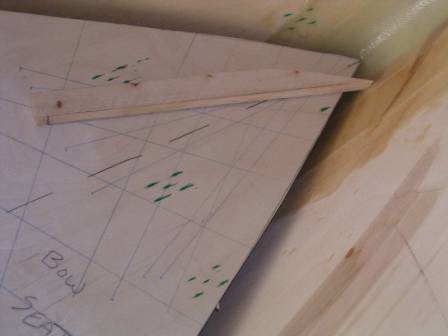
The lines can cross each other and go any which way—it doesn’t
matter. The lines are simply pointing at a spot off of the edge of your
pattern and they can point from anywhere on the pattern. Just make sure
you can find the marks at the end of the lines you are drawing. Once you
have enough lines to pick up the shape, remove the pattern and go find a
piece of material large enough to make the finished part with.
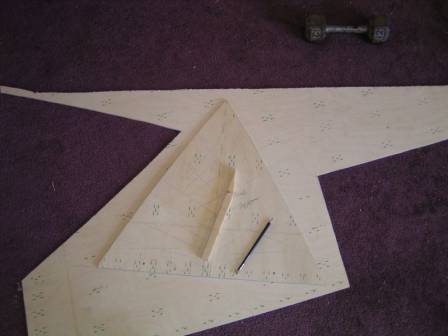
In this case, I found a big piece of scrap and decided that if I cut
away everything that didn’t look like a bow seat, I would end up with
a bow seat. The way you decide which pieces don’t look like your
finish part is to place your measuring stick along the lines you drew,
align the mark on the line with the notch on your stick and at the very
point of the stick, mark the material.
You are going to do what you did on your truck, boat, whatever,
just in reverse.
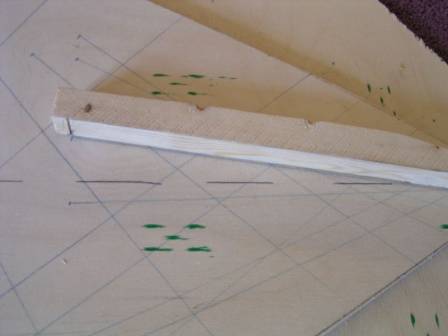
Again, align the notch, mark, stick, line…
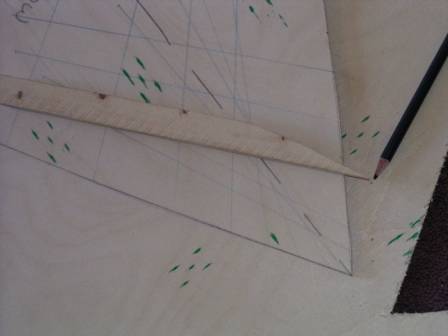
And mark the point of the stick onto the material. Do it, obviously,
everywhere there is a line and mark.
After you have it all done you will have a whole bunch of points
marked around, or inside, of your pattern.
Your pattern is no longer necessary. Now you get to play that
childhood favorite—Connect the Dots. I usually just sketch it in but I’ll show you a way that is
a little better for long, smooth curves—say you are fitting Batmobile
fins to the bedsides of your ranger.

Take little nails and pound them into the marks that you made. Bend a
thin stick around the outside of the nails using other nails or weights
to hold the stick. Draw inside the stick. On the parts you are going to
sketch you can do a nice job of making a smooth curve if you keep your
eye a couple of marks ahead of where the pencil is and draw in short
quick strokes. Now, using a
tool suitable for what you are going to cut, remove all the bits that
don’t look like what your are building.

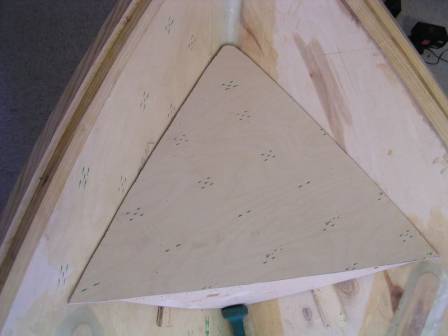
Here is the part ready to by puttied and taped into place. Using this
method of fitting it takes about ten minutes to shape a part. Your
pattern does not have to be very pretty at all. You can use your
imagination to expand on this simple way of fitting things.
|
